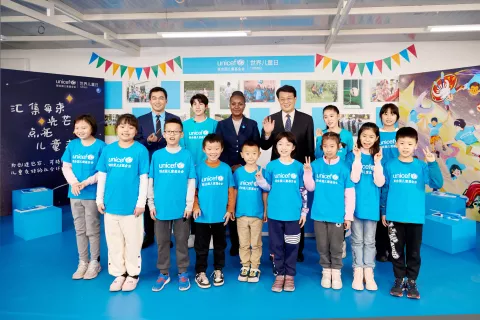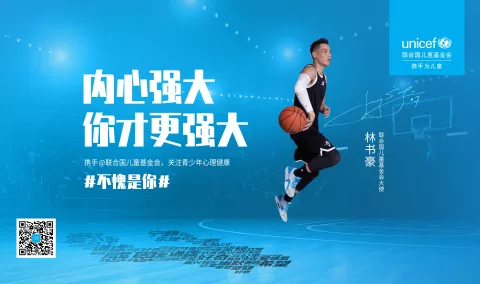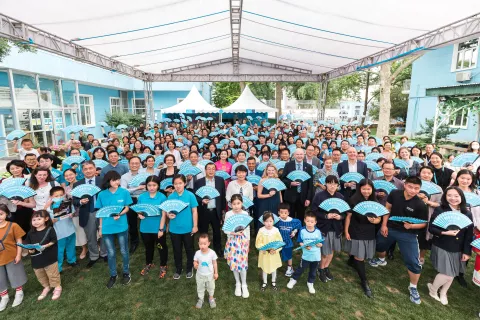A Partnership for Children over 30 Years
for every child
- Available in:
- 中文
- English
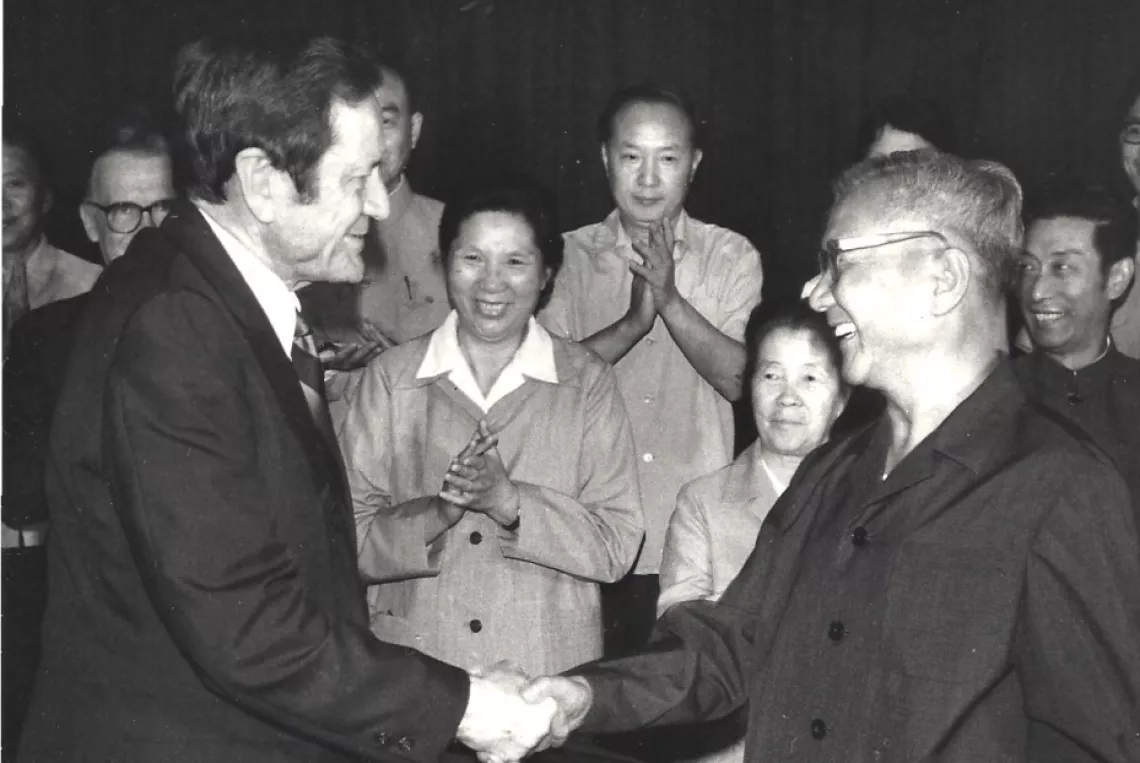
James Grant, UNICEF Executive Director and Cheng Fei, Vice Minister of the Ministry for Economic Relations with Foreign Countries launch formal cooperation in 1981. UNICEF`s first official programme mission took place in 1979.
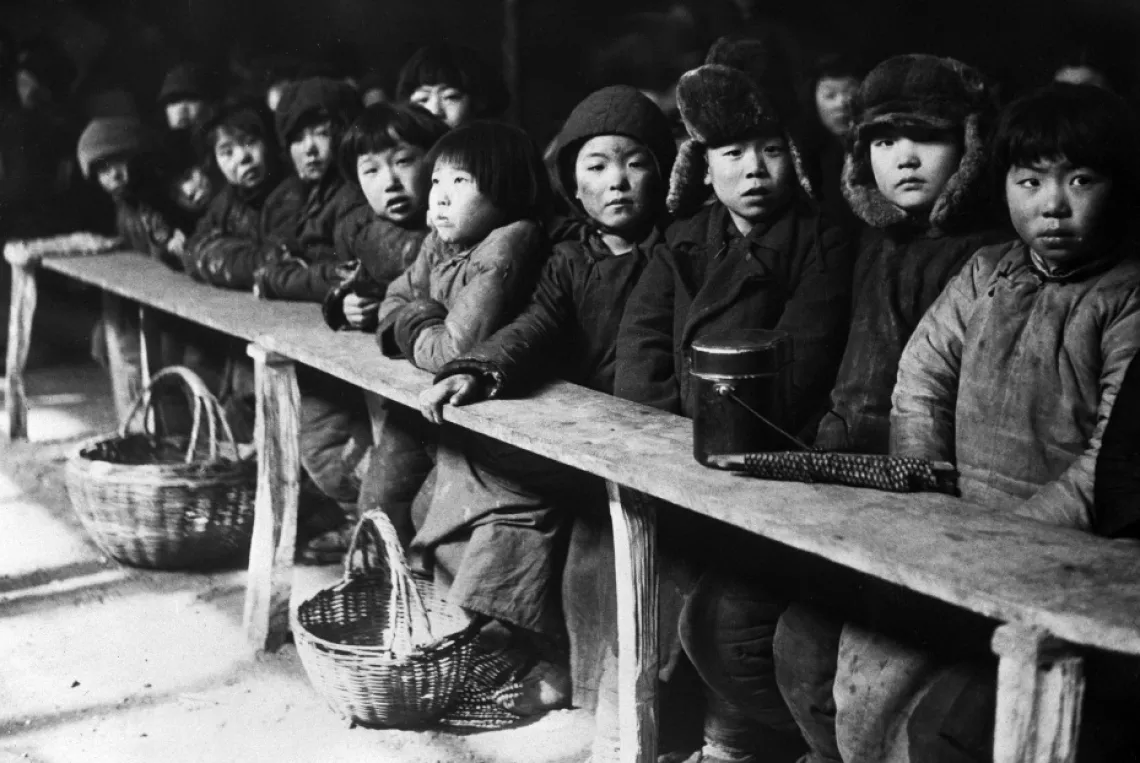
In 1947, China became the first Asian country where UNICEF provided assistance. From the start, UNICEF upheld the humanitarian principle of non-discrimination and provided support for all needy children affected by the conflict.
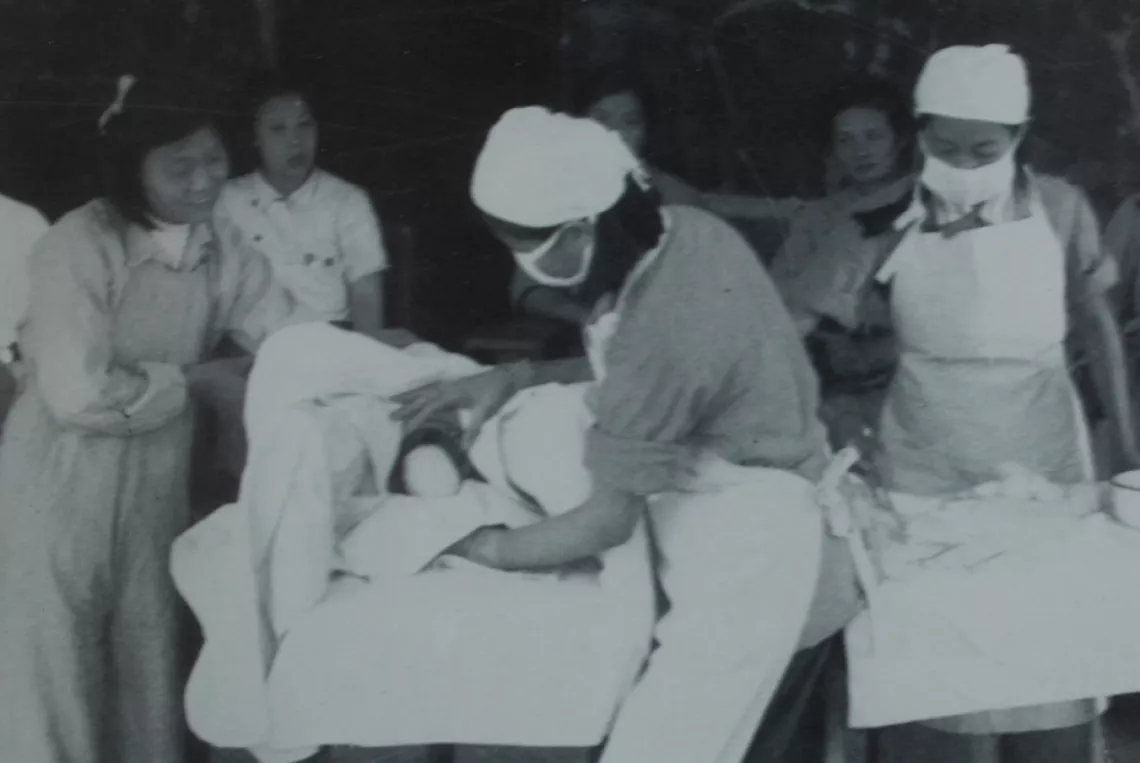
Women receiving midwifery training as part of a UNICEF-supported health and sanitation programme in the liberated areas. The programme contributed to the later development of China's "barefoot doctor" rural healthcare system.
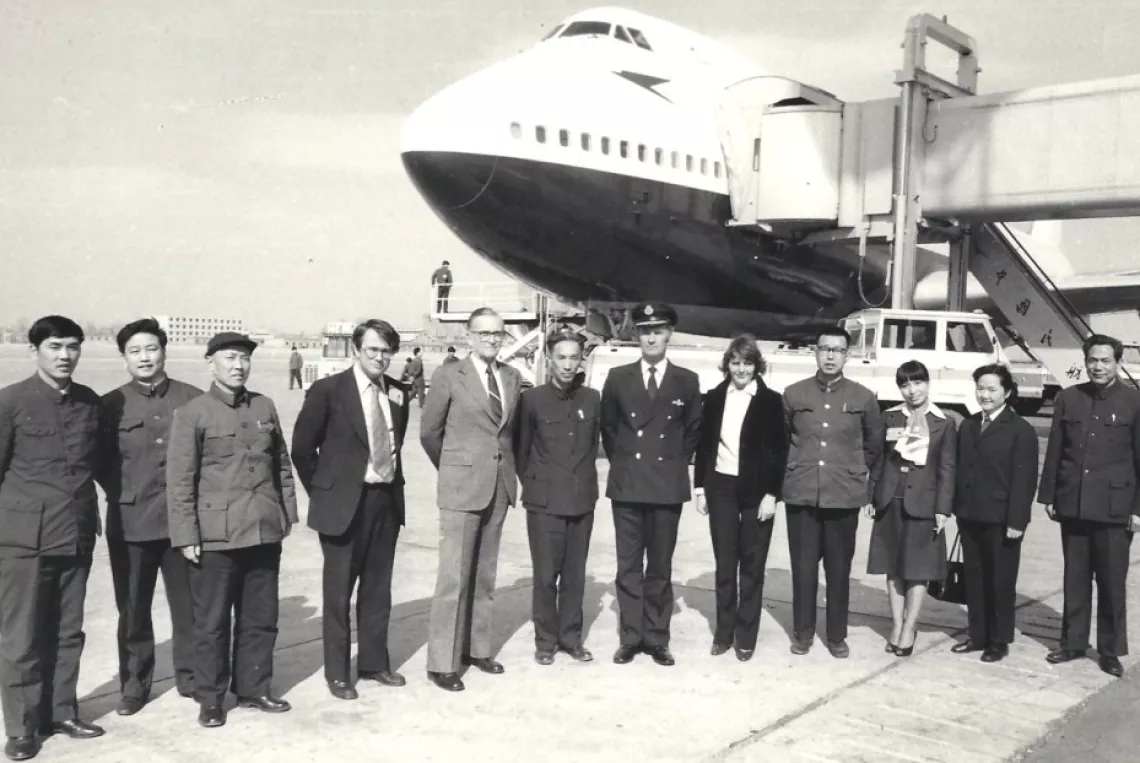
Starting in the early 1980s, UNICEF rushed relief supplies to help children and women affected by drought in Hebei Province and floods in Hubei. Most recently, UNICEF mounted a large relief effort for children affected by Wenchuan earthquake of 2008.
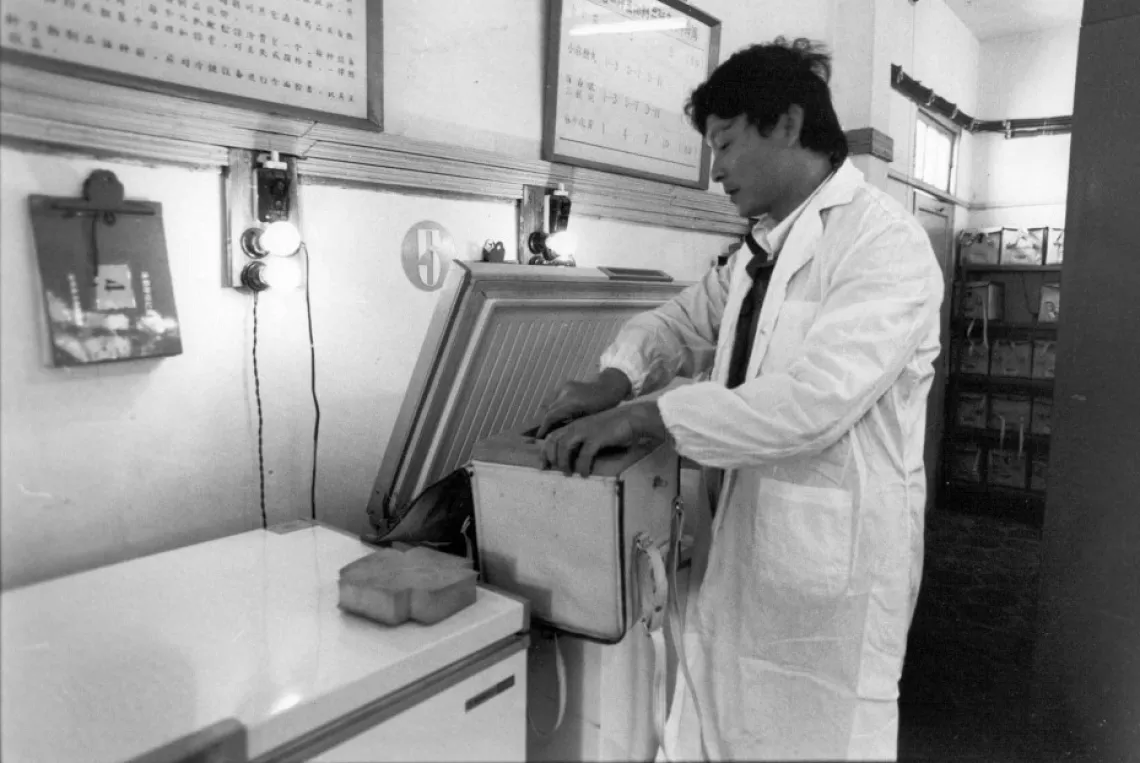
In 1981, the Ministry of Health, UNICEF and WHO finalized the plan to upgrade the cold chain system in 5 southern provinces covering 80 million people. UNICEF provided freezers, refrigerated trucks and cold boxes to get more children immunized.
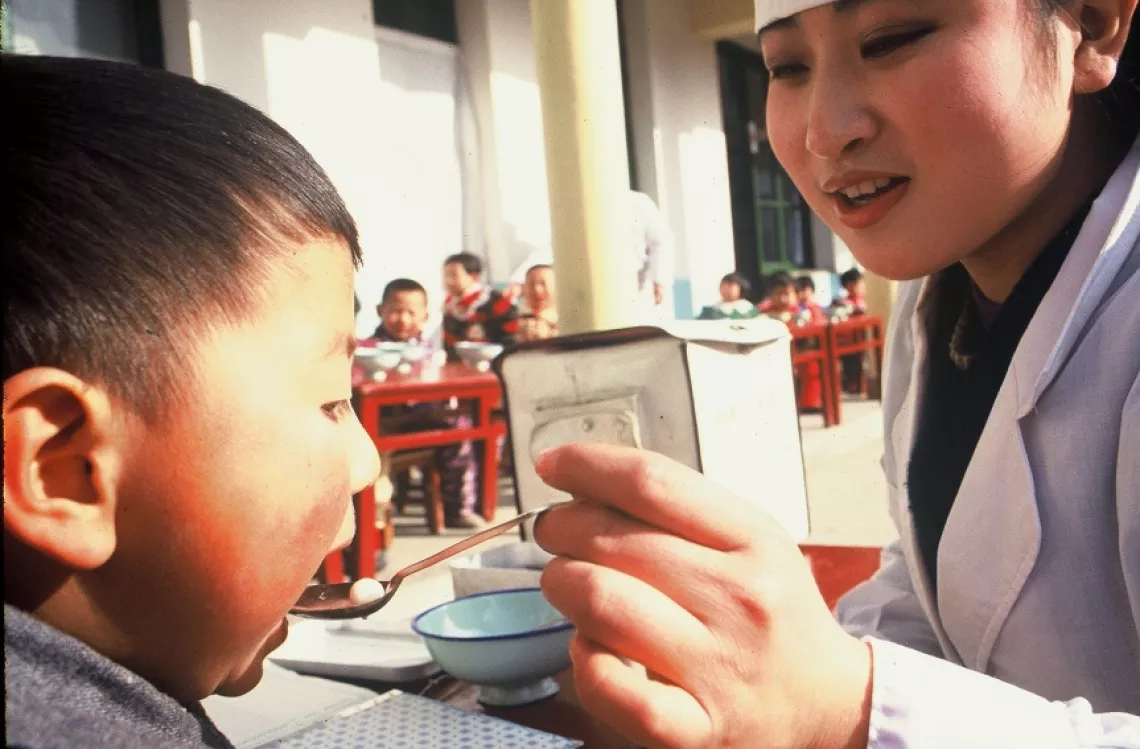
By 1988, the cold chain had expanded to cover almost 90 percent of the population. Meanwhile, UNICEF and the Government of China also worked together in those areas where the cold chain was not yet fully operational.
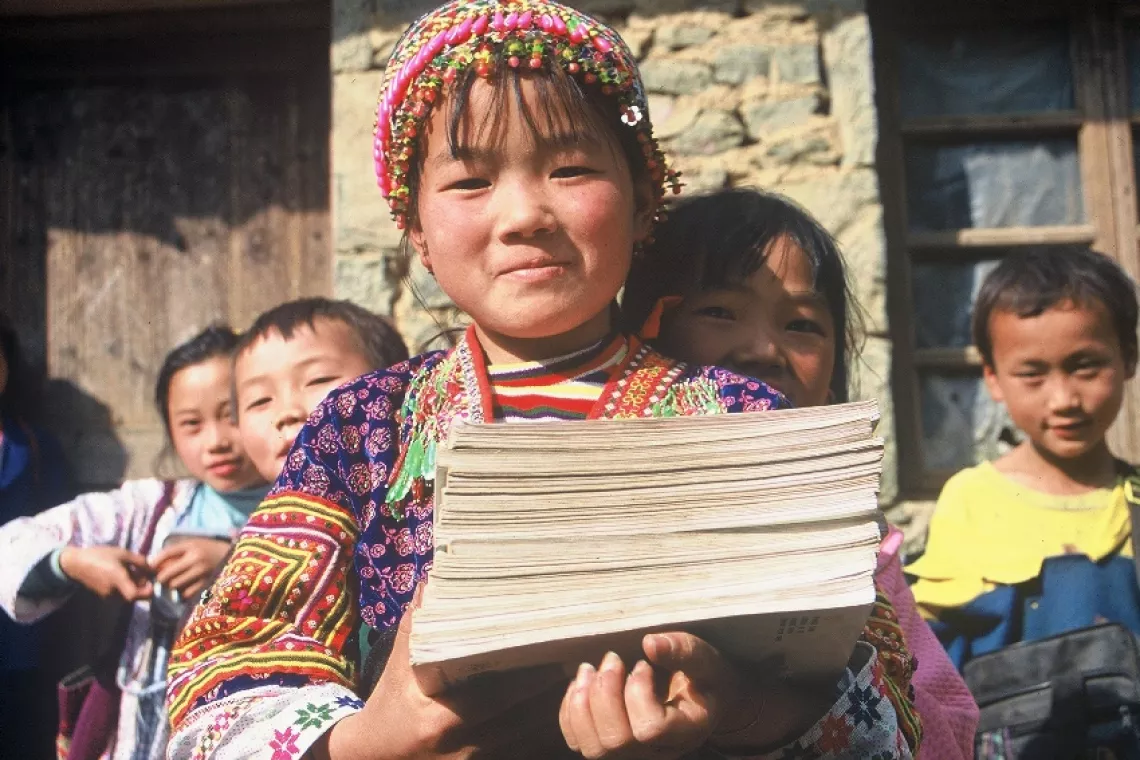
UNICEF provided equipments to and helped train workers of the People's Education Press, the China Youth Press and the School for the Blind in Shanghai to print books and magazines for children.
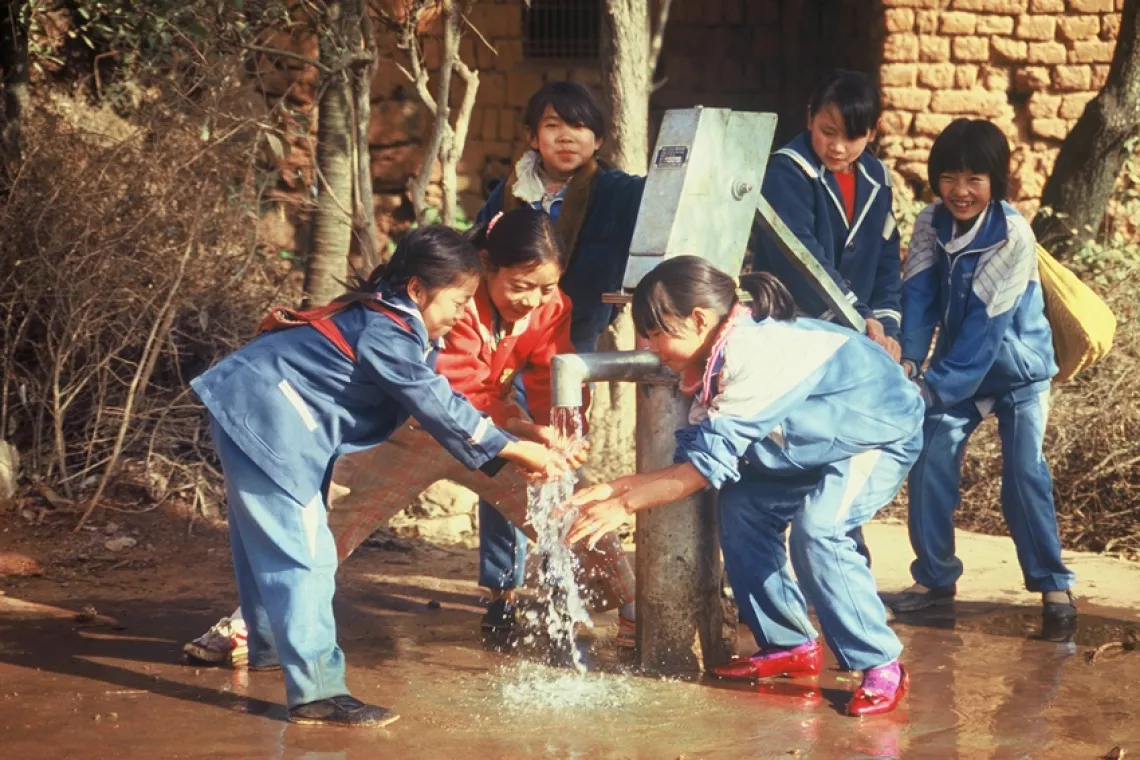
Girls wash their hands at a UNICEF hand pump. In 1987, UNICEF began its first water and sanitation project in Lunan County, Yunnan Province. The incidence of diarrhoea among under-5 children dropped from 45 percent in 1986 to 4.5 percent in 1988.
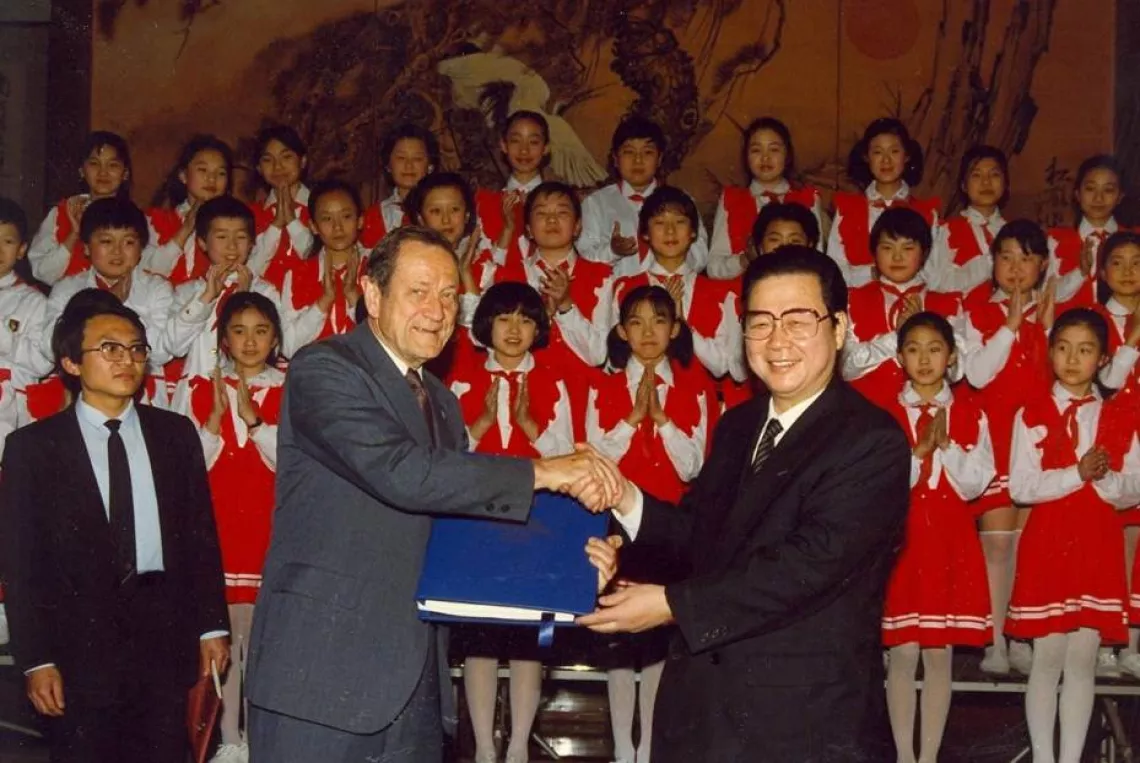
Premier Li Peng and UNICEF Executive Director James P. Grant at a signing ceremony for the World Summit for Children Declaration and Plan of Action, 1991. By 1990 China became UNICEF's 3rd largest country programme covering 120 million people.
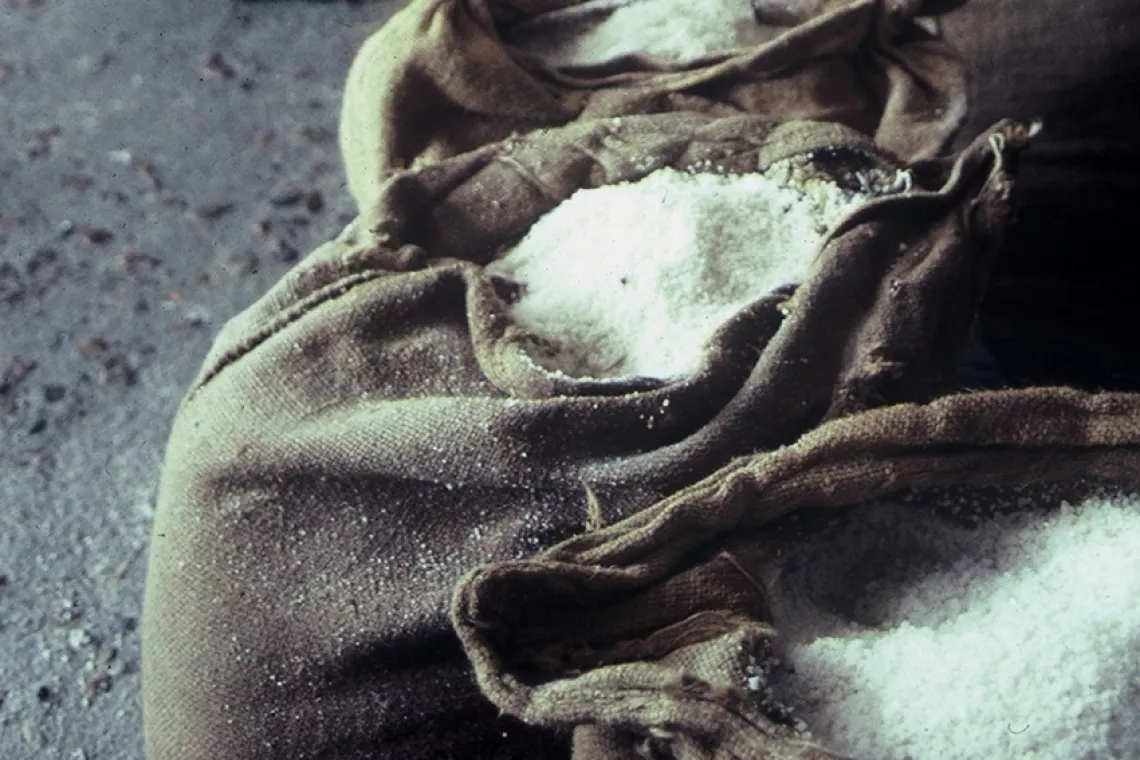
In 1995, UNICEF supported the Ministry of Health to establish an IDD surveillance system that tracked the increase of the proportion of households consuming adequately iodized salt from 40 percent in 1994 to over 90 percent in the past decade.
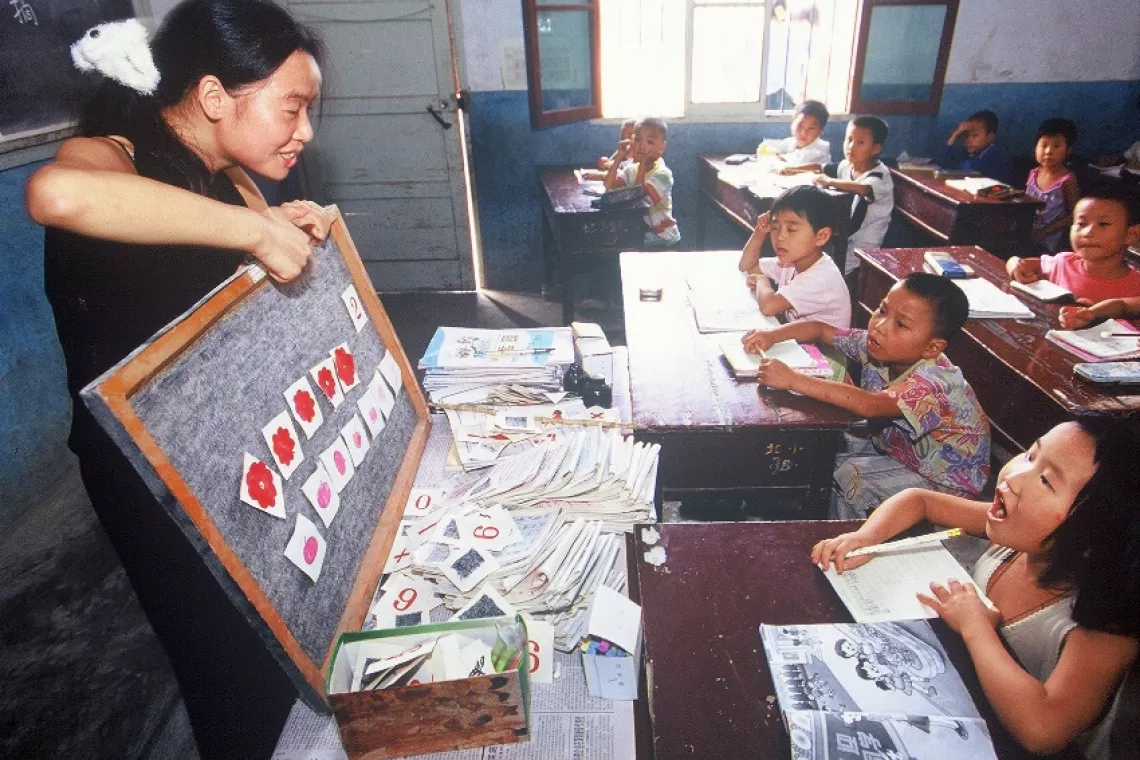
In the mid-1980s UNICEF became an important partner in China's drive to achieve education for all by 1990. UNICEF supported the training of educational workers and promoted the Child Friendly approaches in schools to improve education quality.
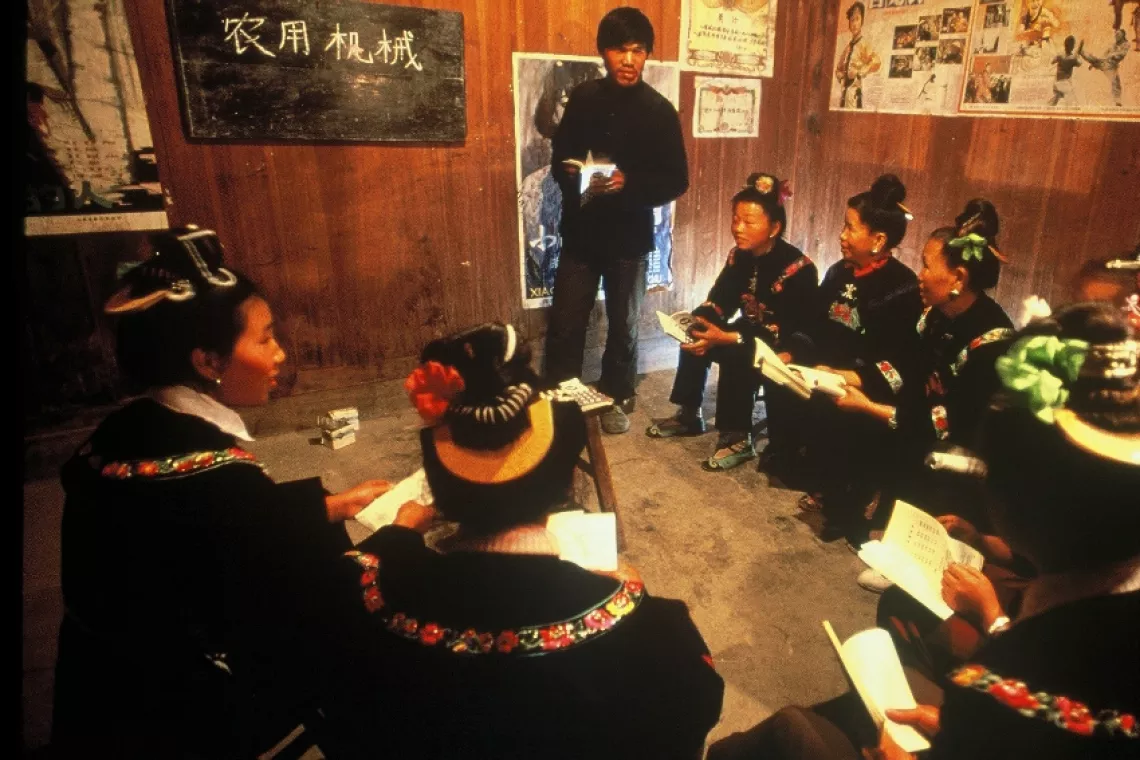
In the late 1980s, UNICEF and the All-China Women's Federation launched a campaign in 7 provinces to enrol ethnic minority girls in school. By 1990 about 100 classes for minority girls and women had opened. UNICEF continues to work for gender equality.
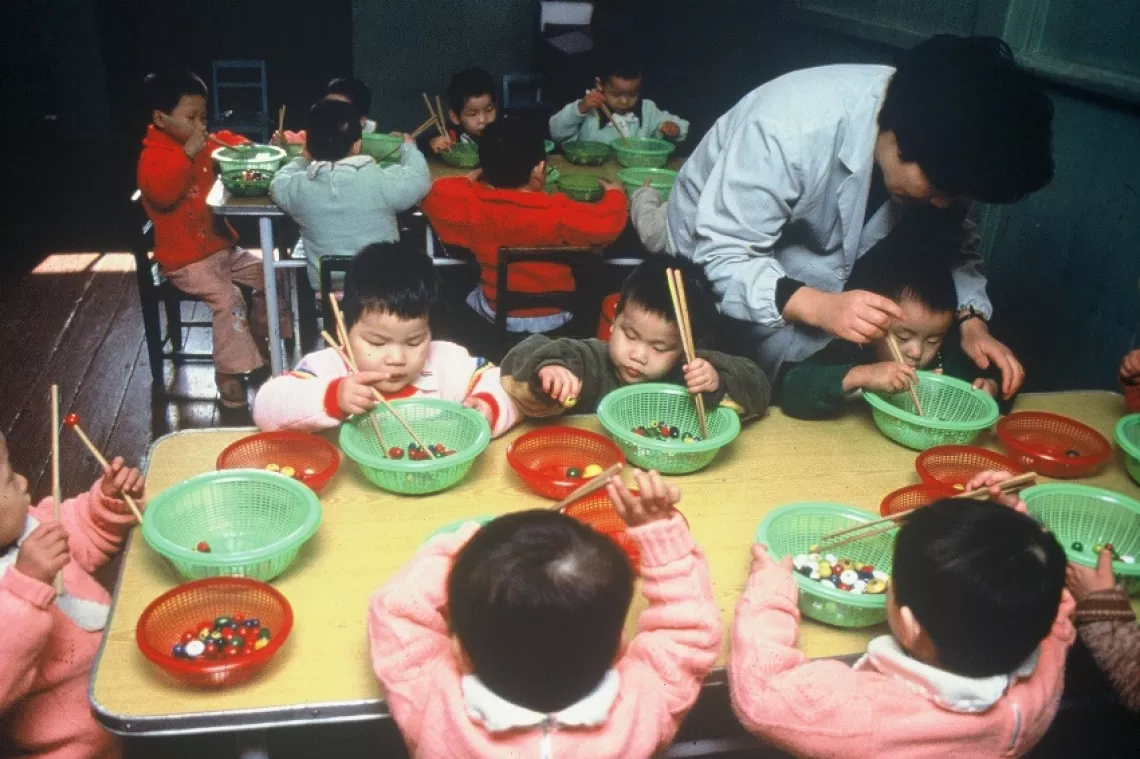
UNICEF has worked with kindergartens and helped educate and train families and caregivers to support early learning. In the early 1980s, UNICEF supported the provision of teaching aids, learning materials, and educational toys for pre-school children.
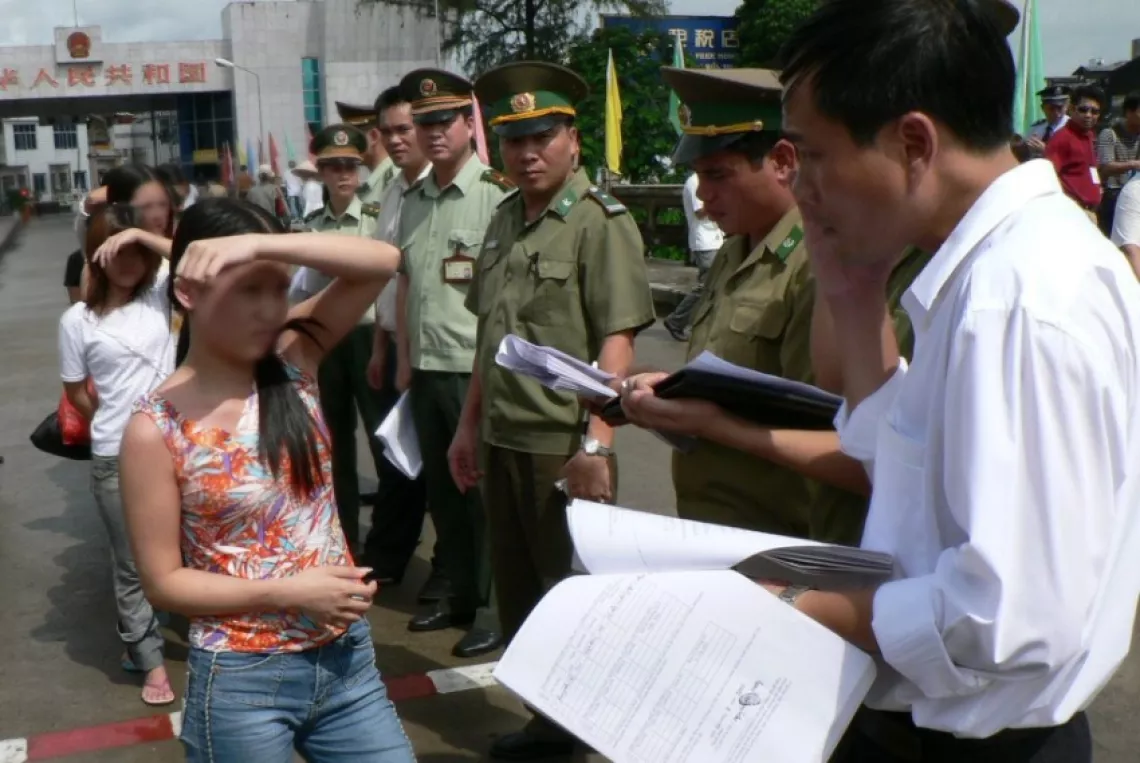
Trafficked Vietnamese girls being repatriated at the Sino-Vietnam border in Guangxi Province. In 2001, UNICEF facilitated a major cross-border agreement to halt child trafficking between China and Vietnam.
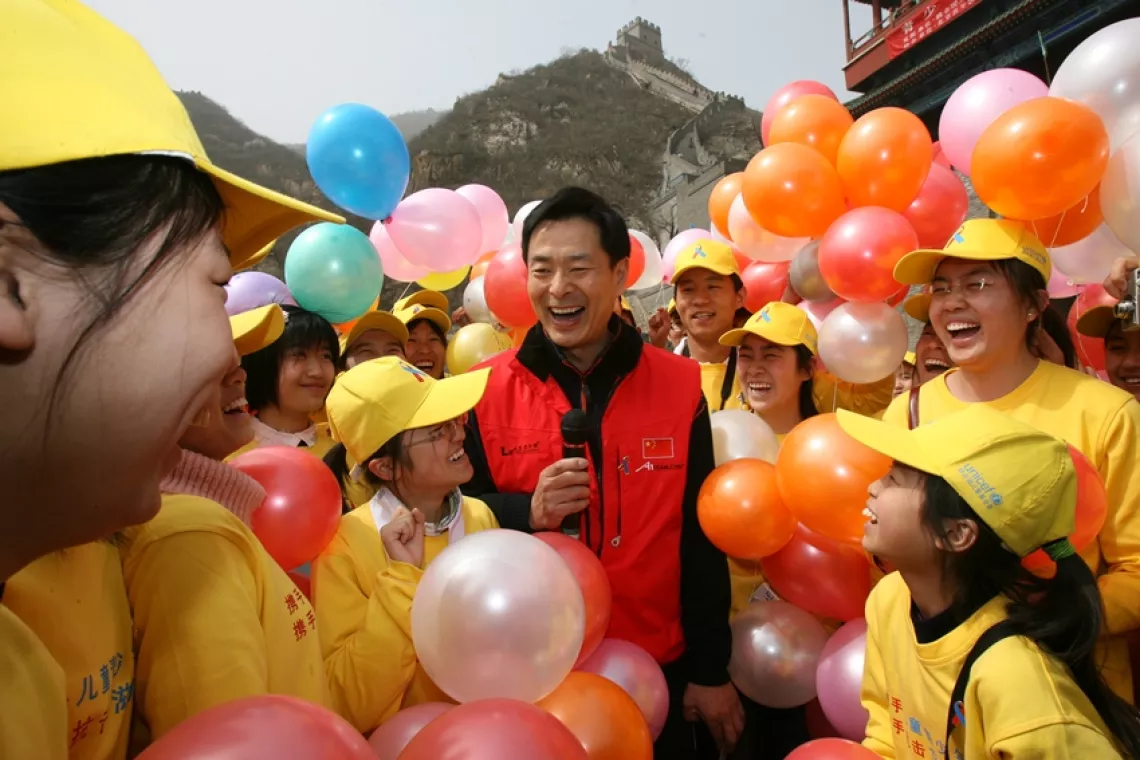
UNICEF was the first int`l organization to work with the Government in an HIV-AIDS programme, supporting surveillance, community education, care and prevention since 1996. In 2006, China joined the global Unite for Children, Unite against AIDS campaign.
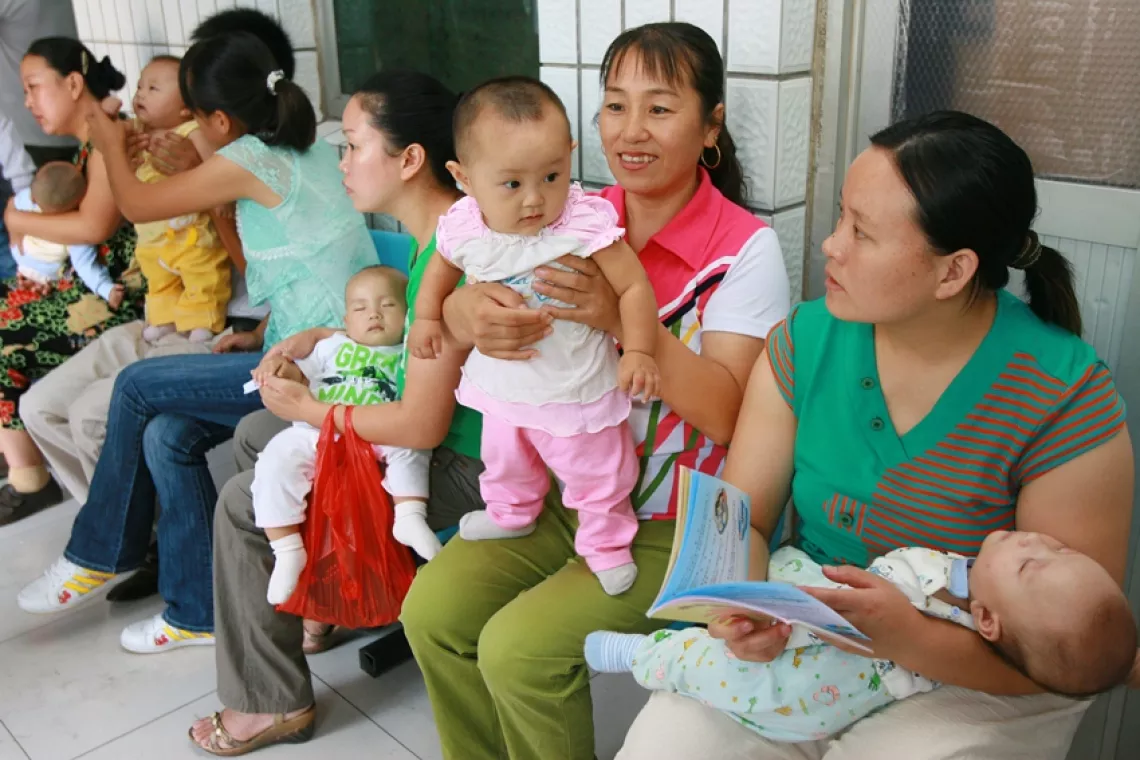
In 2001, UNICEF supported China to organize the country's first seminar on migrant children. UNICEF later helped launch a pilot project in Shijiazhuang and Wuxi to register migrant children to increase their access to health and education services.



